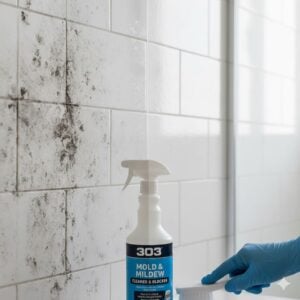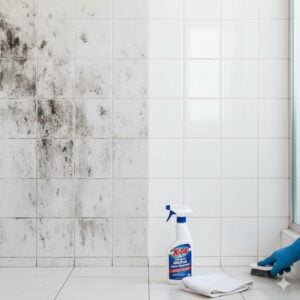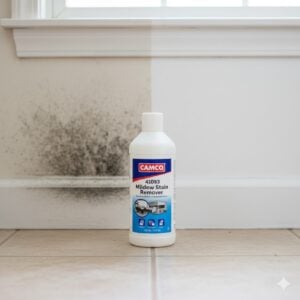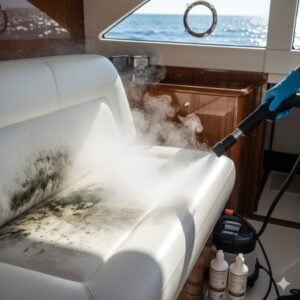Curtains play a major role in defining the beauty and cleanliness of any room, but they also trap dust, allergens, and moisture more than most people realize. Over time, they absorb odors, accumulate grime, and even foster mold growth if not washed properly. Whether in homes or offices, regular curtains washing is essential not just for appearance, but also for hygiene. However, many homeowners attempt DIY washing only to find their curtains shrinking, fading, or wrinkling beyond repair. This guide explains the right approach, the hidden risks of DIY, and why expert care from Bio-On UAE provides safer, longer-lasting results.
Table of Contents
ToggleWhy Curtains Need Regular Washing
In the UAE, curtains collect fine desert dust, air conditioning residue, and household odors much faster than in other climates. These particles settle deep within the fabric, reducing air quality and affecting indoor freshness. Over time, curtains that aren’t cleaned properly start to discolor and hold unpleasant smells. Regular washing not only restores their brightness but also helps maintain a healthy home environment.
Professionally cleaned curtains last longer because the fibers remain intact, while consistent washing prevents allergies, especially for families with children or pets.
Common Types of Curtain Fabrics
- Cotton and Linen: Natural fibers that shrink easily when exposed to heat or improper washing.
- Polyester: Durable and easy to maintain, but prone to static and dust accumulation.
- Velvet: Luxurious texture that requires delicate dry-cleaning methods.
- Sheer and Silk: Sensitive fabrics that can tear or lose sheen if handled roughly.
- Blackout Curtains: Often lined with rubber or acrylic layers that can crack when exposed to hot water or harsh detergents.
Knowing your fabric type helps determine whether machine washing, hand washing, or professional dry cleaning is best.
DIY Curtains Washing: The Temptation
DIY curtain cleaning seems convenient and cost-effective. With detergents and washing machines easily available, many people believe it’s an easy weekend chore. For lightly soiled polyester curtains, home washing can indeed work. However, once dust and odor build up, especially on thicker or layered fabrics, the limitations of DIY methods become clear.
DIY washing often misses the embedded dirt between folds and may damage material due to wrong temperature settings or aggressive detergents. Worse, if curtains aren’t dried completely, they may develop a musty smell or mold patches within days.
DIY Curtain Washing Steps (and Their Limits)
- Remove hooks, rings, and accessories before washing.
- Shake out loose dust outdoors before soaking.
- Use cold or lukewarm water with mild detergent to protect fibers.
- Rinse gently and avoid twisting or wringing the fabric.
- Dry in a shaded, ventilated area away from direct sunlight.
While these steps help for routine cleaning, they can’t handle grease stains, deep odors, or color fading. Moreover, home dryers and irons often overheat, causing permanent damage to delicate materials.
Risks of DIY Curtain Washing
Improper washing can shorten the lifespan of even high-quality curtains. Here are the most common risks:
- Shrinkage: Natural fabrics like cotton and linen may shrink if soaked too long or dried with heat.
- Color fading: Using strong detergent or bleaching agents dulls fabric colors, especially on printed or dark curtains.
- Mold growth: Damp curtains left to dry indoors trap moisture and attract mold spores.
- Wrinkles and deformation: Heavy fabrics lose shape if hung wet or ironed at high temperatures.
- Odor retention: Home detergents can’t fully remove odors from pets, smoke, or cooking fumes.
DIY washing might seem cheap at first, but one mistake can ruin expensive drapes. Professional curtain cleaning prevents these issues through controlled cleaning and drying processes.
How Professionals Handle Curtains Washing
Expert cleaning services like Bio-On UAE use methods tailored for each fabric type. Rather than one-size-fits-all washing, they start with a detailed inspection to decide whether steam, dry, or wet cleaning is suitable.
- Pre-inspection: Identify fabric composition, stains, and damage.
- Vacuum and dust removal: Remove surface dust and allergens before washing.
- Stain treatment: Apply specialized solutions for oil, mold, or smoke marks.
- Steam or dry cleaning: Clean without soaking, preserving shape and texture.
- Odor neutralization: Eliminate cooking or AC odors with anti-bacterial agents.
- Pressing and reinstallation: Return curtains wrinkle-free and ready to hang.
Bio-On UAE’s Professional Curtains Washing Process
Bio-On UAE provides curtain cleaning that blends scientific precision with environmental safety. Our process uses advanced steam technology to lift dirt and bacteria from fibers without harsh chemicals. Every cleaning step is performed under controlled humidity to avoid shrinkage or color loss.
- Step 1: Pre-vacuuming to remove loose dust and sand particles.
- Step 2: Fabric testing for color fastness and fiber sensitivity.
- Step 3: Eco-safe cleaning using low-moisture steam or dry solvent.
- Step 4: Rinse and sanitize to remove residue and bacteria.
- Step 5: Controlled drying with anti-wrinkle treatment.
Bio-On’s municipality-approved cleaning process ensures safe, hygienic results for homes, hotels, and offices across Dubai, Abu Dhabi, and Sharjah. Our team also handles delicate drapes like velvet and silk that require expert handling.
Price Range for Curtain Cleaning in UAE
Prices vary based on curtain size, fabric type, and condition. Below is a general pricing range for professional curtain cleaning in the UAE:
- Small window curtain set: AED 50–80
- Medium-length curtains: AED 90–150
- Floor-length drapes: AED 180–250
- Blackout or layered curtains: AED 250–350
Note: Bio-On UAE provides free inspection for large or luxury materials before quoting. Prices include eco-safe products and sanitization.
Why Professional Curtain Washing Is Worth It
Professional curtain cleaning is not just about looks — it’s a matter of health and preservation. Deep cleaning removes dust mites, allergens, and bacteria trapped inside fibers, improving indoor air quality. Expert washing also preserves stitching, color vibrancy, and the drape’s natural fall.
While DIY cleaning can save money short-term, the long-term costs of damage or premature replacement are higher. Professionals use commercial-grade machines that clean thoroughly while maintaining delicate fabrics safely.
DIY vs Professional Curtain Cleaning Comparison
| Aspect | DIY Washing | Professional Bio-On Cleaning |
|---|---|---|
| Cleaning depth | Surface only | Deep fiber-level cleaning and sanitization |
| Odor and bacteria removal | Temporary, often incomplete | Complete disinfection and odor neutralization |
| Risk of shrinkage or fading | High, depending on fabric | Minimal, with controlled temperature and solvents |
| Drying time | Up to 2 days | 4–6 hours average |
| Longevity of curtains | Reduced lifespan | Extended durability and appearance |
Tips to Maintain Curtains Between Professional Washes
- Vacuum curtains once a week using a soft brush attachment.
- Keep windows clean to minimize dust buildup on fabric.
- Avoid smoking or cooking near curtains to prevent odor absorption.
- Use dehumidifiers during humid seasons to reduce moisture damage.
- Schedule professional cleaning every 6–12 months depending on usage.
Conclusion
Clean curtains reflect not only a tidy home but also a healthy environment. While it’s tempting to wash them yourself, the risks — from shrinkage to color fading — often outweigh the savings. Professional curtains washing by Bio-On UAE combines fabric science, eco-friendly technology, and attention to detail to deliver spotless, fresh-smelling results without damage. With transparent pricing and 24/7 support, Bio-On ensures that your curtains stay beautiful and hygienic year-round. If your drapes are due for a deep refresh, reach out to Bio-On UAE via WhatsApp, phone, or the form on this page and let experts handle the rest with care.













